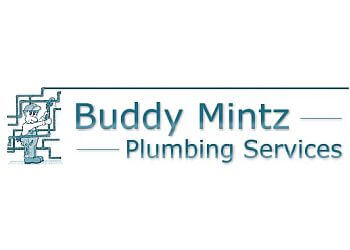What to do in case of an emergency plumbing repair
Repairing a plumbing emergency in a hurry: Tips for a successful outcome
Every second counts when there is an emergency with a plumbing system. It is crucial to act quickly and effectively in the case of plumbing emergencies, such as burst pipes or overflowing toilets, or they can do significant damage to your home and sanity. We offer essential tips for navigating these unexpected situations with confidence in our blog on emergency plumbing repairs.
When your basement floods or your water heater malfunctions, knowing what to do is crucial. When faced with a plumbing emergency, we'll provide you with expert advice in order to minimize damage and restore order. Be prepared, stay informed, and handle plumbing emergencies with ease.
Identifying Common Plumbing Emergencies
A plumbing emergency may take many forms, but some are more common than others. Burst pipes are most often caused by excessive pressure or freezing temperatures. Overflowing toilets are also common, usually caused by pipe blockages. The malfunctioning of a water heater can also result in sudden leaks or hot water interruptions. Effective damage control and resolution of these emergencies are dependent upon identifying these emergencies as soon as possible. When homeowners recognize the signs of a problem, such as unusual sounds, damp spots, or sudden drops in water pressure, they can take immediate action to mitigate the situation and prevent further damage.
Shutting Off Water Supply
To prevent further flooding or damage, shut off the water supply in any plumbing emergency. The main shut-off valve is usually located near the water meter or where the main water line enters the home. Using a clockwise turn, shut off the water flow. An emergency involving a specific fixture, like a toilet or sink, might have separate shut-off valves. You can save time during a crisis by familiarizing yourself with the locations of these valves beforehand. To effectively address the problem, assess the situation calmly once the water has been turned off.
Essential Tools for Quick Fixes
Plumbing emergencies can be handled more effectively by having the right tools on hand. These are some essential tools every homeowner should have:
Adjustable Wrench
Pipe Wrench
Plunger
Plumber's Tape
Pipe Cutter
Flashlight
Bucket
Towels
Gloves
Drain Snake
DIY Solutions for Immediate Relief
If there is an immediate plumbing issue, homeowners may need to implement temporary DIY solutions until professional help arrives. The flow of water can be temporarily halted by using plumber's tape or a pipe clamp to plug a leaky pipe. Plunging or using a drain snake may help open clogged drains or toilets.
In addition, towels or buckets can be strategically placed to contain water leaks and prevent further damage. DIY measures can alleviate temporary issues, but they are not permanent solutions, and they should be followed up with professional repairs to resolve the underlying problem.
When to Seek Assistance
It is important to remember, however, that addressing more complex problems effectively can often require professional help. When a plumbing emergency exceeds your knowledge or your tools, it's important to recognize the situation quickly. If you notice extensive water damage, persistent leaks, foul odors, or a sudden drop in water pressure, you should seek professional assistance.
A licensed plumber can assist you too if your attempts to resolve the issue on your own prove unsuccessful or if you are faced with a safety risk. Getting professional help as soon as possible can prevent further damage to your home.
Preventing Further Damage
To prevent further damage after a plumbing emergency, immediate action is imperative. Despite shutting off the water supply and applying temporary DIY solutions, secondary damage such as mold growth or structural damage may still occur. As temporary measures, homeowners can use dehumidifiers or fans to dry affected areas, remove wet materials from the area, and seal off damaged plumbing with waterproof materials. As a result of addressing these concerns promptly, homeowners can minimize the long-term impact of the emergency and facilitate the restoration of their property.
How to deal with burst pipes: A Step-by-Step Guide
Burst pipes must be dealt with swiftly to prevent extensive damage to your property. You can effectively resolve the issue by following these steps:
Turn off the main water supply: The first step is to stop the flow of water by shutting off the main water supply. You can find the shut-off valve near your water meter or at the place where the main water line enters your home. To stop the water flow, turn the valve clockwise.
To relieve pressure, open faucets everywhere in your house after shutting off the main water supply. You can prevent further leaks and minimize the amount of water damage by doing this.
Determine where the burst pipe is located: Locate the leak by inspecting your plumbing system. Moisture damage may be visible as damp spots, bulging walls, or discolored ceilings. There is often a burst pipe near these indicators.
Determine the size and severity of the pipe rupture. In the event of a small leak, it might only be necessary to patch it temporarily, whereas for larger ruptures, the pipe may need to be replaced.
In the case of a mild burst pipe, plumber's tape, a pipe clamp, or a rubber hose and clamp might suffice to temporarily patch it. If the leak is extensive, wrap the tape tightly around the area or use the clamp to attach a patch to the damaged area.
My Buddy the Plumber
+17208078051
https://mybuddytheplumberllc.com/
https://maps.app.goo.gl/ufTX6gKdvPuULvEB8
